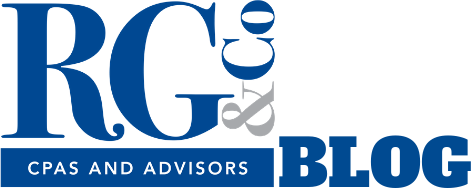This tax filing season will be exceptional for virtually every business and individual taxpayer, especially after the Tax Cuts and Jobs Act was signed in December of 2017. The topics discussed are not in any order of importance but are beneficial for a variety of business owners and individuals.
Section 179 Deduction
IRC Section 179 allows for the immediate expense of personal property placed into service for business purposes. For the 2018 tax year, businesses may immediately expense up to $1 million of the cost of any IRC §179 property placed in service each tax year. Qualifying property for Sec. 179 now includes “qualified improvement property” and roof systems, fire protection, HVAC systems, and alarm and security systems to non-residential real property placed in service after the building was first placed in service.
Bonus Depreciation
Businesses now may expense 100% of the cost of qualified property in the year the property is placed into service. This 100% bonus threshold starts phasing out after 5 years. Unlike in prior years, businesses can now apply bonus depreciation on some qualified used property. While considering your course before filing, be aware that you can elect out of 100% bonus entirely depending on your tax situation. It is important to note that certain states do not conform to this specific federal tax law. Unfortunately, “qualified improvement property” does not qualify for the bonus and has been left unintentionally as 39-year property. However, see Sec. 179 above and discuss your improvements with your tax advisor for the best tax advantages.
Qualified Business Income Deduction – IRC Sec. 199A
This is one of the hottest discussion topics of the past year. To lessen the tax burden to some businesses after the Domestic Production Activities Deduction was repealed, and to keep pass-through investors at a lesser combined tax rate than Corporate investors, the IRS enacted a new cashless deduction for the lesser of qualified business income (QBI) or 20% of taxable income. The deduction for specified service trade or businesses (SSTBs) is disallowed unless your income level is below certain thresholds. Consult your tax advisor to find out if your business is an SSTB. Taxpayers whose taxable income is below the threshold of $157,500 ($315,000 for married filing joint) will not be subject to this limitation. Many planning areas exist, for instance, the decision to take 100% bonus depreciation will reduce your taxable income, but also your QBI allowable. Aggregation of activities may also be considered. Rental real estate businesses qualify as well. If you own a pass-through entity, make sure you’re discussing this impact with your tax advisor.
Cost Segregation Study
A Cost Segregation Study is an engineering-based study that allows a real property owner to depreciate a new or existing structure by reallocating real estate building costs to tangible personal property. There are significant tax benefits derived from utilizing shorter recovery periods. Depreciation expense is reallocated for property over five, seven, and 15 years instead of 39 years for the main structure of the building. If you built or acquired a commercial real estate investment property in 2018, discuss doing a cost segregation study before completing your tax return.
Employer Credit for Paid Family and Medical Leave (FMLA)
Eligible employers are allowed a general business tax credit for paid family and medical leave. The employer must have a written policy in place that provides at least two weeks of annual paid family and medical leave for full-time employees and provide a policy for part-time employees. Other requirements exist as well.
Retirement Plan Options
One of the most overlooked tax planning options is underfunded plans and employees not taking advantage of plans available to them. A 401(k) plan defers $18,500 per year, with a $6,000 catch up for those 50 years old and over. The traditional IRA plan contributions are $5,500, plus a $1,000 catch-up if the taxpayer is 50 years old or older. Roth IRAs also incur income limits. The difference with a Roth IRA is that contributions are not tax-deductible, but withdrawals including interest earned from the account are not taxable upon retirement age.
A Simplified Employee Pension plan, frequently known as a SEP, is set up by the employer, with contributions by the employee limited to 25% of W-2 wages or $55,000. The employee contribution limit for 2018 is $12,500 per tax year, with a $3,000 catch-up for taxpayers 50 years or older.
A Defined Benefit Plan is also known as a cash balance plan. This plan is more complex but allows for greater contributions than other plans. These plans are for the most profitable entities looking to sock away more dollars than other plans allow.
Depending on the plan you have in place or still available to fund by the due date of your tax return, discuss the tax benefits with your tax advisor.
Health Savings Account (HSA)
Through an HSA, the taxpayer can set aside money on a pre-tax basis to pay for qualified medical expenses. An HSA can be used only if you have a High Deductible Health Plan (HDHP). The HSA funds roll over year to year if you don’t spend the full amount and interest earned is not taxable. The 2018 contributions have increased to $3,450 for self-only and $6,900 for family coverage. HSA contributions are allowed for 2018 up to April 15, 2019.
Interest Expense Limitations – IRC Sec. 163(j)
Another hot topic this tax season is the implementation of Sec. 163(j), which limits the amount of interest expense deductible for businesses. This deduction is limited to the sum of the taxpayer’s business interest income for the tax year, 30% of the taxpayer’s “adjusted” taxable income and the taxpayer’s floor plan financing interest. The one major exception to this rule is that for small businesses with average annual gross receipts for the three prior tax year of $25 million, this limit does not apply. Another major exception is for “electing real property business.” A new tax form, 8990, has been provided by the IRS for calculating. One wrinkle in the rules above is that for taxpayers with multiple related, affiliated, consolidated, or commonly controlled companies, the $25M threshold will be aggregated. If your businesses are approaching this threshold, make sure you discuss this issue with your tax advisor.
Unearned Income Tax for Your Children
For 2018, a child’s net unearned income is taxed at the rates applicable to estates and trusts if it exceeds $2,100. Trust and estate tax rates hit the top bracket much quicker than individuals. A child’s tax liability will not be based on the parent’s rates through year 2025. Plan and discuss with your tax advisor. A child can be up to age 24 if a full-time student and does not provide more than half of their own support.
Many other changes will impact taxpayers this year (i.e., state and local tax deduction cap, elimination of entertainment expense deductions, Opportunity Zone investments, tax rate changes) and this article doesn’t even scratch the surface. Make sure you increase your discussions with your tax advisor this tax season and plan for return preparation to take longer than normal as these changes are being analyzed and software is being continually updated.
Last, we thank you for your business. Happy Tax Season!
Need More Help?
Contact our CPAs at Rivero, Gordimer & Company in Tampa, Florida by calling 813-875-7774 or visiting our website.
About Mike Helton, CPA:
Michael E. Helton is a shareholder who joined Rivero, Gordimer & Company in 1999. He has considerable experience in tax preparation, planning, and consultation for individuals and businesses, estates and trusts, and mergers and acquisitions of closely held businesses. Mike has extensive experience with medical practitioners, rent-to-own businesses, and the construction industry. He also practices in business-owner succession planning, general financial and operational consulting, and representation of clients before the Internal Revenue Service.




